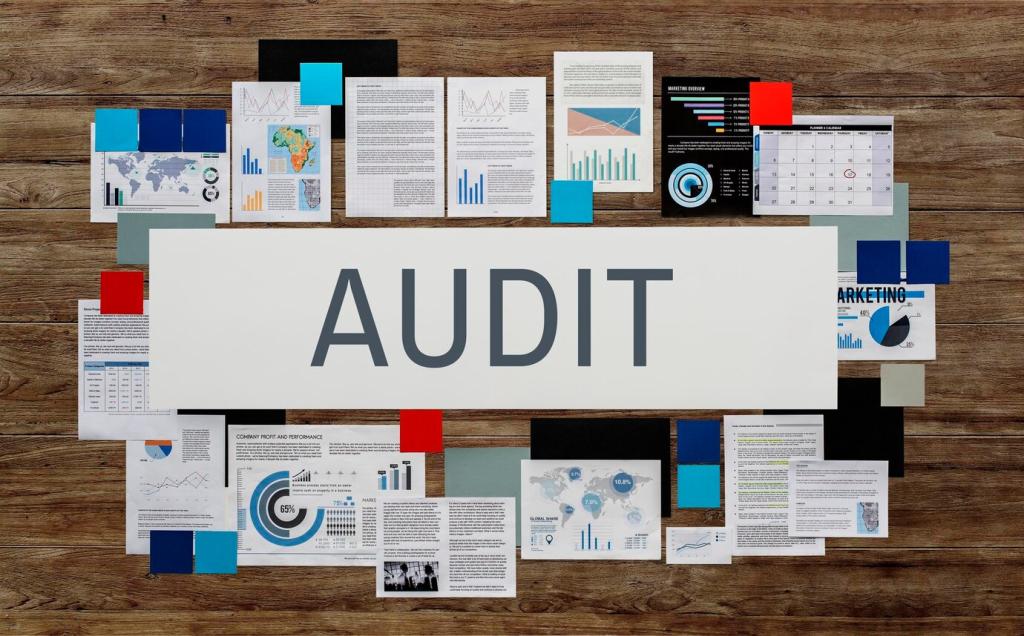The Impact of Auditing on Corporate Financial Success
Chosen theme: The Impact of Auditing on Corporate Financial Success. Welcome to a candid, actionable exploration of how rigorous audits turn uncertainty into trust, tighten operations, and unlock sustainable profitability. Subscribe for fresh insights and share your questions to shape future topics.
Why Auditing Drives Sustainable Profitability
Trust as a Financial Asset
Credible audited statements reduce doubt for lenders, investors, and partners. Lower perceived risk translates into better terms, faster deal cycles, and stronger negotiating power, ultimately supporting repeatable earnings and long-term financial resilience across changing market conditions.
Lower Cost of Capital
Consistent, high-quality audits can narrow credit spreads and boost analyst confidence. Over time, this compounds: cheaper financing funds smarter growth, reduces dilution, and provides cushion for downturns, enabling disciplined investment in high-ROI initiatives without unnecessary risk premiums.
Operational Efficiencies Revealed
Audits spotlight process waste, control gaps, and reconciliation bottlenecks. Closing those gaps eliminates leakage, accelerates close cycles, and frees talent for value-creating work, turning what once felt like administrative burden into measurable productivity and margin expansion across departments.
From Red Flags to Gold Standards: Risk Reduction That Pays
Catching revenue recognition errors or inventory shrink earlier prevents cumulative damage. Every month of earlier detection reduces compounding losses, legal exposure, and firefighting costs, enabling management to redirect energy toward growth rather than crisis management and frantic remediation efforts.

From Red Flags to Gold Standards: Risk Reduction That Pays
When compliance is embedded, sales cycles shorten with enterprise buyers and global partners. Clean controls make vendor onboarding smoother, unlock regulated markets, and reduce audit fatigue, turning governance into a practical sales enabler instead of a perceived bureaucratic obstacle to momentum.
Case Story: The Turnaround After a Tough Audit
Auditors identified late shipments booked as current-quarter revenue, a manual spreadsheet for inventory valuation, and shared admin passwords. Management paused bonuses, owned the gaps publicly, and invited the audit committee into weekly remediation reviews to maintain urgency and accountability throughout.
Case Story: The Turnaround After a Tough Audit
They deployed an order-to-cash cutoff workflow, implemented cycle counts with barcoding, and enforced least-privilege access. Finance re-mapped materiality thresholds and set a 10-day close target. The culture shifted from defensiveness to pride as teams celebrated each resolved control weakness achieved.


Metrics That Prove Audit Value
Quantify savings from corrected billing, reduced write-offs, and faster closes. Tie control fixes to cost of quality and rework reductions. When you report, connect these gains directly to EBITDA improvements and the valuation multiple they may help support in negotiations.


Metrics That Prove Audit Value
Audit-driven adjustments reduce DSO through cleaner invoicing and dispute handling. Better inventory accuracy cuts days on hand without stockouts. Fewer unexpected accruals smooth payables planning, releasing cash that can fund marketing sprints, product experiments, or strategic hiring without dilutive financing.
Tone at the Top
Leaders who admit mistakes and reward early escalation reduce concealment risk. Celebrate clean reconciliations and well-documented processes in all-hands, signaling that accuracy is career-enhancing, not just a back-office obligation that rarely earns recognition or support from executives.
Data Hygiene and Controls
Define single sources of truth, automate reconciliations, and log exceptions. When documentation lives with the transaction, walkthroughs are faster, variance analysis is credible, and institutional memory survives turnover without painful gaps that stall progress or invite unnecessary rework during audits.
Technology’s Role in Modern Audits
Centralized, governed data simplifies sampling and tie-outs. When systems speak the same language, exceptions surface faster, root causes are clearer, and auditors can trace transactions end-to-end without stitching together fragile spreadsheets under time pressure.

Engage Your Board and Investors
Transparent Audit Committee Updates
Summaries should rank risks by financial impact, show remediation timelines, and present leading indicators. Clarity earns support for investments and avoids surprises, fostering a collaborative posture rather than a defensive posture during sensitive governance discussions or budget reviews.
Materiality Mapped to Strategy
Explain how each control ties to revenue integrity, unit economics, or expansion plans. When boards see strategic relevance, they prioritize funding and unblock change management, accelerating initiatives that directly influence sustainable financial outcomes and predictable performance metrics.
Investor Communications That Build Confidence
Share how audit-driven improvements reduced volatility or improved cash predictability. A credible narrative earns patience for transformation and supports valuations during uncertainty, strengthening relationships when markets are jittery and speculation threatens to overshadow fundamentals.
